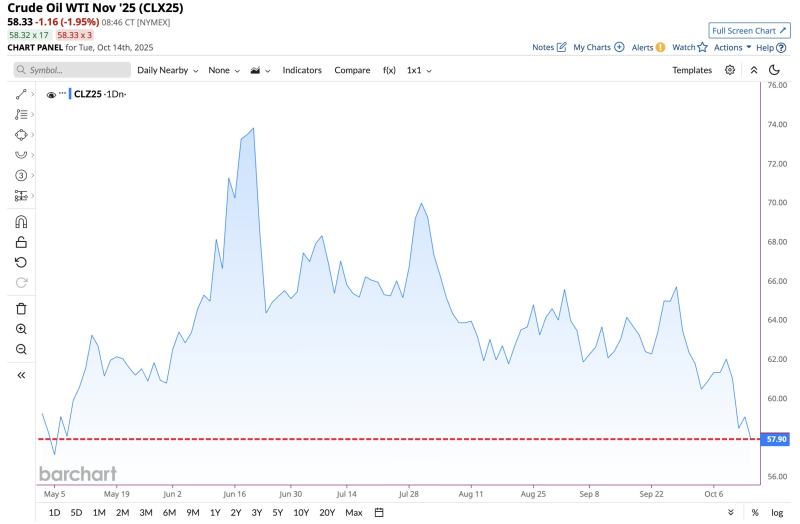Oil markets are experiencing significant selling pressure as WTI crude futures test critical support levels not seen since spring. With prices falling below $60 per barrel for the first time in months, traders are questioning whether this marks a temporary pullback or the start of a deeper correction. The combination of weak global demand, persistent supply, and a stronger dollar has created a challenging environment for energy markets.
Current Market Situation
WTI November 2025 futures (CLX25) dropped 1.95% to $58.33 on October 14, approaching the key support level at $57.90. This represents the lowest closing price in over five months. As noted by Barchart, crude has been in a clear downtrend since mid-June, when prices were trading above $75 per barrel. The chart pattern reveals a series of lower highs and lower lows, signaling weakening bullish momentum and growing bearish control.

Key Drivers Behind the Decline
- Weak Global Demand: Consumption remains soft across major markets, particularly in Europe and Asia, raising concerns about oversupply. Economic uncertainty and slower industrial activity have dampened oil appetite, creating headwinds for prices.
- Steady U.S. Production: American oil producers have maintained high output levels despite falling prices, keeping the market well-supplied and preventing any supply-driven rally.
- Dollar Strength: The appreciating U.S. dollar has made oil more expensive for foreign buyers, reducing international demand and adding downward pressure on prices.
Technical Outlook
Prices are now testing the critical $57.90 support zone. A breakdown below this level could open the door to a move toward $55, extending the bearish trend. However, if support holds, we might see a technical bounce toward the $62-64 range in the near term. Momentum indicators suggest the market is nearing oversold territory, which could limit immediate downside but doesn't eliminate the risk of further declines if fundamentals remain weak.
 Usman Salis
Usman Salis

 Usman Salis
Usman Salis


